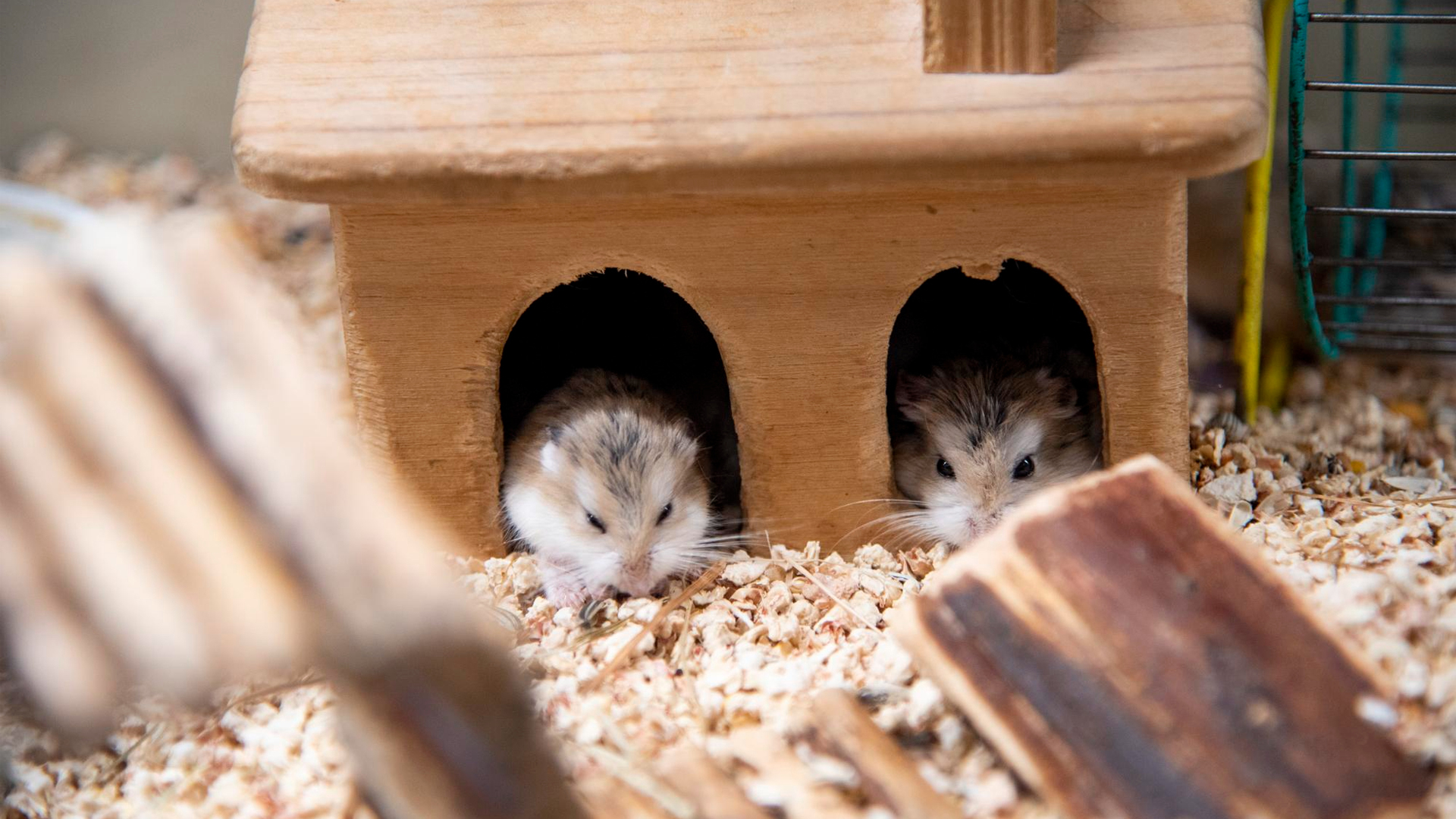Hamsters are adorable little creatures that are popular as pets. But if you’re thinking about getting more than one hamster, you might want to reconsider. Why? Let’s find out!
Can Hamsters Live Together?
Hamsters are generally solitary creatures, and their social behaviors vary significantly depending on the species. A few species of dwarf hamsters can be kept together in same-sex pairs.
Understanding Solitary and Social Species
Hamster species can generally be categorized into solitary and social types, each exhibiting distinct behaviors and social structures.
Solitary Species
These species establish and defend territories, and they can become aggressive if housed with other hamsters, particularly during mating or when competing for resources.
The reclusive nature of these hamsters makes them popular as pets, as they thrive best when given their own space.
Social Species
Social species live in groups and may engage in social interactions, such as grooming and playing.
However, even social species can exhibit territoriality and aggression, particularly if overcrowded or if individuals are introduced improperly.
Why Do Pet Hamsters Live Together in Pet Stores but Not at Your House?
Hamsters are solitary animals and should always be kept with one hamster per cage, yet it seems that pet stores often ignore this rule. Here’s why:
Social Structures
When hamsters are housed together in a confined space, they may appear to get along, but stress and territorial behavior can emerge once they are in a more permanent living situation.
Territorial Behavior
Hamsters are naturally territorial animals. This territorial instinct is often suppressed in the store environment due to the stress of being in a public space.
Once they are in a comfortable home, their natural behaviors may come to the forefront.
Space Considerations
Pet stores typically provide limited space for hamsters, which can lead to them cohabitating more peacefully than they would in a larger, more personalized habitat.
When given adequate space, hamsters will defend their territory rather than share it, making solitary living a more suitable option for most pet owners.
Some Well Known Social Hamster Breeds

While they may seem like independent little critters, some hamster breeds are known for their social and friendly nature. Here are some of the best social breeds to consider:
Roborovski Hamster
These tiny hamsters are known for their playful and energetic personalities. While they can be a bit skittish, with patience, they can become quite social.
They do best in pairs or small groups, but be sure to monitor them for any signs of aggression.
Campbell’s Dwarf Hamster
Campbell’s hamsters are known for their playful and curious nature. They can be social with their owners and, when properly introduced, can live in same-sex pairs or small groups.
Winter White Dwarf Hamster
Winter Whites are typically friendly and can adapt well to handling. They can also live in pairs or groups when given enough space and resources.
In the wild, some winter white dwarf hamsters live in colonies, which suggests a higher level of social interaction compared to other species.
Some Well Known Solitary Hamster Breeds
Many hamster breeds are naturally solitary and thrive when housed alone. Here are some of the most well-known types of hamsters that prefer solitude:
Syrian Hamster
Often considered the most popular pet hamster, the Syrians (also known as the golden hamster) is a large breed that is best kept alone.
They are friendly and can become quite affectionate with their owners. Their playful nature and curiosity make them a joy to observe.
African Hamster
Less common as pets, the African hamster is known for its reclusive nature. They are typically shy and prefer to live alone.
Due to their skittishness, they may not be as interactive as other breeds, but they can still be fascinating pets.
Chinese Hamster
This breed has a unique appearance with a longer body and a tail. Chinese hamsters prefer solitude by nature and can be territorial.
They are curious and can develop strong bonds with their owners if handled consistently from a young age.
Keeping Hamsters Together: Do’s and Don’t s
When it comes to housing a group of hamsters together, it’s essential to understand their social needs and behaviors.
Here are some important guidelines to help you maintain a harmonious environment for your furry friends.
Do’s
Research Species Compatibility: Some hamster species can live in small groups, while some should be kept alone. Always verify compatibility before introducing hamsters.
Provide Adequate Space: If you decide to house multiple hamsters together, ensure the cage is spacious enough. A larger habitat reduces territorial disputes.
Create Multiple Hiding Spots: Offer plenty of hiding places, tunnels, and enrichment to minimize stress and provide each hamster with a safe retreat when needed.
Monitor Behavior: Keep a close eye on their interactions. Look for signs of aggression or stress. If any issues arise, be prepared to separate them immediately.
Maintain Cleanliness: Regularly clean the cage to minimize disputes over odor. This helps keep the living environment healthy and reduces stress among your hamsters.
Don’ts
Don’t Force Pairings: Never force hamsters to live together. Disputes can escalate from minor squabbles to serious aggression, leading to stress, injury, or even death.
Avoid Small Hamster Cages: Don’t keep multiple hamsters in a cage that’s too small. Crowding can lead to stress, fighting, and health issues.
Don’t Ignore Signs of Stress: If you notice any signs of distress, such as squeaking or aggressive behavior, don’t ignore them. Take action to separate or provide more space.
Avoid Over-breeding: If you have both male and female hamsters, be cautious of unplanned breeding. Separate sexes to prevent unexpected litters.
Don’t Skip Socialization: While some hamsters may prefer solitude, others may benefit from companionship. Don’t overlook the importance of socialization and bonding time.
Closing Thoughts on Housing Hamsters Together
If you are contemplating keeping multiple hamsters, it is crucial to provide ample space, enrichment, and resources to minimize territorial disputes.
Remember, a well-cared-for hamster is a happy hamster, whether they live alone or with companions.


